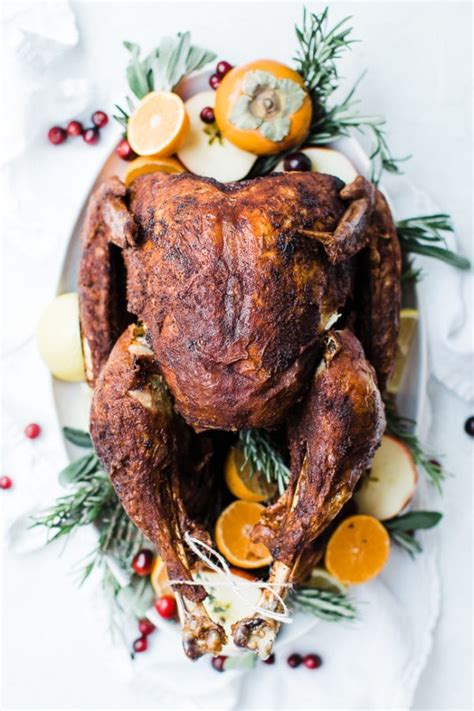The Best Fried Turkey Recipe for a Crowd-Pleasing Thanksgiving
Thanksgiving is almost here, and what better way to celebrate than with a juicy, crispy fried turkey? This isn't your grandma's turkey; this recipe guarantees a show-stopping centerpiece that will impress even the most discerning palates. Forget dry, bland turkey – this method ensures a perfectly cooked bird with incredibly flavorful, golden-brown skin. Get ready for the compliments to roll in!
Preparing Your Star: The Turkey
Before you even think about the fryer, the preparation is key to a perfectly fried turkey.
Choosing the Right Turkey:
- Size Matters: A smaller turkey (8-12 pounds) is ideal for frying. Larger birds take longer to cook evenly and can be challenging to manage in a fryer.
- Fresh is Best: While frozen turkeys can be fried, fresh turkeys offer better results and a more consistent cooking time. Avoid any turkeys with discoloration or unpleasant odors.
Brining (Optional, but Highly Recommended):
Brining adds incredible moisture and flavor to your turkey. It's a simple process that yields exceptional results. A simple brine solution consists of water, salt, sugar, and your favorite seasonings (herbs, spices, etc.). Submerge the turkey in the brine for at least 12-24 hours in the refrigerator. This is one of the most impactful steps to guarantee a juicy, flavorful bird.
Preparing the Turkey for Frying:
- Pat it Dry: Thoroughly pat the turkey dry inside and out with paper towels. Excess moisture can cause splattering in the fryer, which is dangerous and undesirable.
- Season Generously: Don't be shy with the seasonings! A flavorful rub, such as a blend of paprika, garlic powder, onion powder, black pepper, and cayenne pepper, will enhance the turkey's taste. Season the inside cavity as well.
The Deep Frying Process: Safety First!
Deep frying a turkey is a thrilling experience, but safety should always be the top priority.
Essential Safety Precautions:
- Outdoor Location: Always fry your turkey outdoors in a well-ventilated area, away from any flammable materials.
- Stable Surface: Place the fryer on a stable, level surface. Never move the fryer while the oil is hot.
- Proper Oil Level: Never fill the fryer past the maximum fill line.
- Thermometer is Crucial: Use a reliable deep-fry thermometer to monitor the oil temperature.
- Never Leave Unattended: Constantly monitor the frying process. Never leave the fryer unattended.
- Fire Extinguisher Nearby: Keep a fire extinguisher readily available.
The Frying Process:
- Heat the Oil: Heat the oil to the recommended temperature (around 350°F or 175°C). This ensures even cooking. Use a cooking thermometer for accurate temperature monitoring.
- Carefully Lower the Turkey: Using a turkey fryer basket or a hoist, carefully and slowly lower the turkey into the hot oil. This minimizes splashing.
- Cook Time: Cook the turkey according to its weight and the fryer's instructions. Generally, it takes around 3-4 minutes per pound. Use a meat thermometer to check for doneness.
- Internal Temperature: The turkey is cooked when the internal temperature reaches 165°F (74°C) in the thickest part of the thigh and breast.
- Remove and Drain: Once cooked, carefully remove the turkey from the fryer and let it drain on a wire rack before carving.
Serving Your Masterpiece:
Allow the turkey to rest for at least 20-30 minutes before carving. This allows the juices to redistribute, resulting in a more tender and flavorful bird. Serve with your favorite Thanksgiving sides and enjoy the fruits of your labor!
Conclusion:
Frying a turkey might seem intimidating, but with careful preparation and adherence to safety guidelines, you can achieve a deliciously crispy and juicy turkey that will be the star of your Thanksgiving feast. Remember, patience and attention to detail are key! Happy frying!
